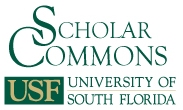Keywords
Quantitative Literacy, Assessment, Communication
Abstract
Quantitative Literacy (QL) has been described as the skill set an individual uses when interacting with the world in a quantitative manner. A necessary component of this interaction is communication. To this end, assessments of QL have included open-ended items as a means of including communicative aspects of QL. The present study sought to examine whether such open-ended items typically measured aspects of quantitative communication, as compared to mathematical communication, or mathematical skills. We focused on public-released items and rubrics from four of the most widely referenced assessments: the Third International Mathematics and Science Study (TIMSS-95): the National Adult Literacy Survey (NALS; now the National Assessment of Adult Literacy, NAAL) in 1985 and 1992, the International Adult Literacy Skills (IALS) beginning in 1994; and the Program for International Student Assessment (PISA) beginning in 2000. We found that open-ended item rubrics in these QL assessments showed a strong tendency to assess answer-only responses. Therefore, while some open-ended items may have required certain levels of quantitative reasoning to find a solution, it is the solution rather than the reasoning that was often assessed.
DOI
http://dx.doi.org/10.5038/1936-4660.4.2.3
Recommended Citation
Kosko, Karl W., and Jesse L. Wilkins. "Communicating Quantitative Literacy: An Examination of Open-Ended Assessment Items in TIMSS, NALS, IALS, and PISA." Numeracy 4, Iss. 2 (2011): Article 3. DOI: http://dx.doi.org/10.5038/1936-4660.4.2.3
Creative Commons License

This work is licensed under a Creative Commons Attribution-Noncommercial 4.0 License

